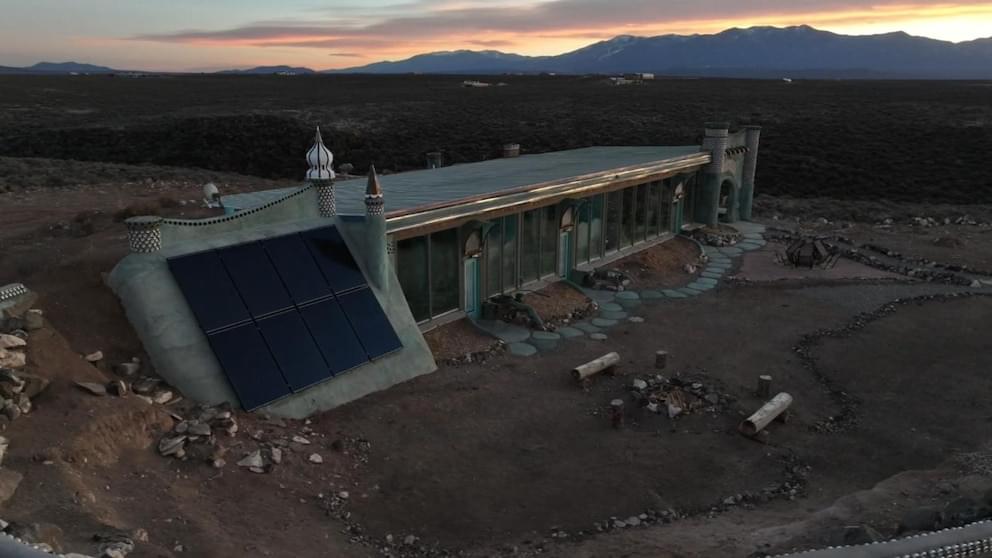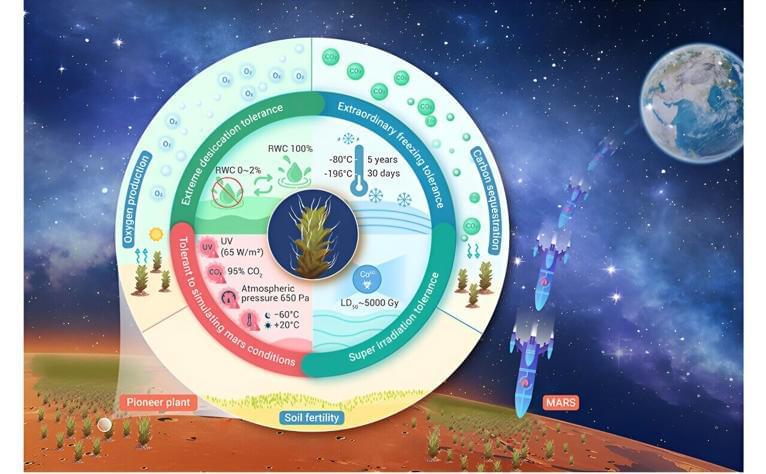More than 100 sustainable homes, also known as “living vessels,” are built into the earth in Taos, New Mexico, and are not connected to any water or electricity.


Hey, I have a nice story for you. During my childhood, I used to live in Italy. We would eat pasta every day and life was simple. I loved my house, but one d…


The desert moss Syntrichia caninervis is a promising candidate for Mars colonization thanks to its extreme ability to tolerate harsh conditions lethal to most life forms. The moss is well known for its ability to tolerate drought conditions, but researchers report June 30 in the journal The Innovation that it can also survive freezing temperatures as low as −196°C, high levels of gamma radiation, and simulated Martian conditions involving these three stressors combined. In all cases, prior dehydration seemed to help the plants cope.
“Our study shows that the environmental resilience of S. caninervis is superior to that of some of highly stress-tolerant microorganisms and tardigrades,” write the researchers, who include ecologists Daoyuan Zhang and Yuanming Zhang and botanist Tingyun Kuang of the Chinese Academy of Sciences. “S. caninervis is a promising candidate pioneer plant for colonizing extraterrestrial environments, laying the foundation for building biologically sustainable human habitats beyond Earth.”
A small number of previous studies have tested the ability of microorganisms, algae, lichens, and plant spores to withstand the extreme environments of outer space or Mars, but this is the first study to test whole plants.
During the hot summer of 2020, confined to his Pasadena home during the COVID-19 pandemic, National Medal of Science-winning applied physicist Amnon Yariv took frequent and long showers to cool off. A surprising result, to go with his record-breaking water bill, was a proposal and theoretical model for a new class of vibrations that can convert a constant force, such as wind or water, to a mechanical oscillation.
An intense discussion is now going on at the International Seabed Authority (ISA), starting in March 2024, and proceeding up to August, for its various instances, committees, and general assembly. The most critical point concerns the call for licenses, which are being advanced by several commercial mining entities, to explore deep sea grounds, seeking rare minerals highly in demand, fueling the energy and green transitions worldwide. Clean energy technologies require more materials, such as copper, lithium, nickel, cobalt, aluminum, and rare earth elements, than fossil fuel-based technologies. Demand for critical minerals could surge 450% by 2050 to meet Paris Agreement climate goals[1]. The deep sea, particularly in the form of polymetallic nodules (PMNs), contains significant cobalt resources. Estimates suggest that by 2035, deep-sea mining of PMNs could produce 61,200 tons of cobalt per year, which could account for up to 50% of current annual global cobalt demand[2].
For the first time, ISA is considering the revision of deep-sea mineral exploitation regulations [3]. Commercial deep-sea mining has attracted increased attention, particularly owing to potential oceanic challenges, including pollution, overfishing, biodiversity, and habitat loss, acidification, rising water temperatures, and climate change. Those favoring commercial mining highlight the need for a supply of materials necessary for global energy transition. Recent meetings in Kingston, Jamaica, have focused on revising the draft regulations for deep-sea mineral exploitation. While some progress has been made, several areas of disagreement remain, particularly regarding environmental protections and the speed of issuing commercial permits. The ISA is aiming to finalize the new regulations by July 2025, but there are concerns that this deadline may not be met.
On the commercial side, The Metals Company (TMC), Canada, anticipates submitting an application for a mining exploitation license in 2024, potentially starting mining operations in 2025, even before the regulations are fully in place. While ISA has not granted any commercial licenses for deep-sea mining, some countries are moving forward independently. Norway already passed a bill in January 2024, which authorizes prospecting for deep-sea minerals, accelerating the hunt for the precious metals that are in high demand for green technologies. Environmental scientists have warned such oceanic exploitation could be devastating for marine life. The outlook concerns Norwegian waters, nevertheless, agreements on mining in international waters could also be reached this year.



In 2021, NASA’s Perseverance rover landed in the Jezero Crater on Mars. For the next three years, this astrobiology mission collected soil and rock samples from the crater floor for eventual return to Earth. The analysis of these samples is expected to reveal much about Mars’ past and how it transitioned from being a warmer, wetter place to the frigid and desiccated place we know today. Unfortunately, budget cuts have placed the future of the proposed NASA-ESA Mars Sample Return (MSR) mission in doubt.
As a result, NASA recently announced that it was seeking proposals for more cost-effective and rapid methods of bringing the samples home. This will consist of three studies by NASA and the Johns Hopkins University Applied Physics Laboratory (JHUAPL).
In addition, NASA has selected seven commercial partners for firm-fixed-price contracts for up to $1.5 million to conduct their own 90-day studies. Once complete, NASA will consider which proposals to integrate into the MSR mission architecture.
